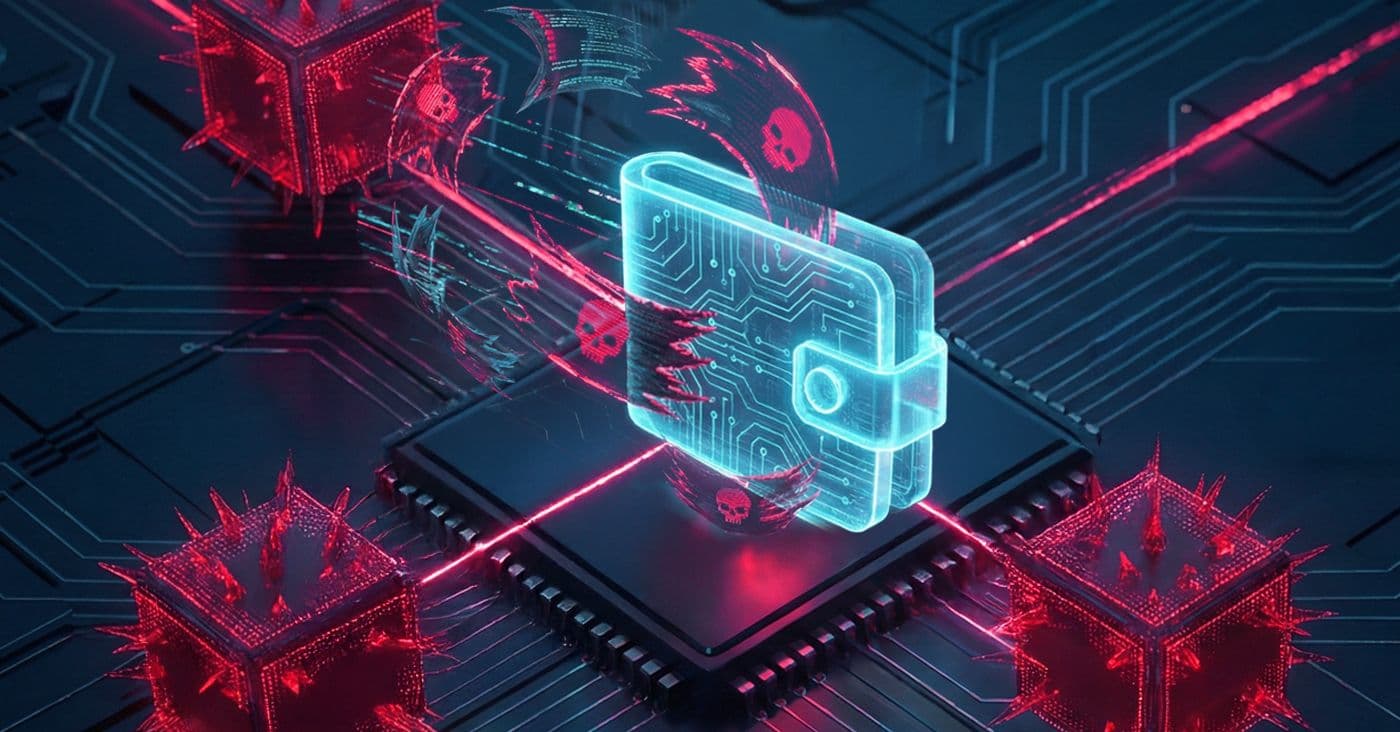
NuGet malware targets Nethereum tools
Highlighting an alarming trend, RL has discovered malicious packages targeting crypto wallets and OAuth tokens to steal funds.
Smishing attack — A deceptive cyberattack in which attackers use text messages (SMS) to lure individuals into divulging sensitive information or performing harmful actions. Smishing (the name is a mashup of "SMS" and "phishing") typically manipulate recipients' sense of urgency, fear, or curiosity so they will click on malicious links, thus downloading infected attachments or sharing personal information.
Smishing attacks have the potential to compromise personal and financial information. By being aware of smishing techniques, individuals and organizations can adopt proactive measures to protect themselves against cyberthreats, safeguard their digital assets, and maintain privacy.
Credential-harvesting smishing: In this method, attackers cunningly masquerade as trusted and reputable entities such as banks, government agencies, or service providers. The attackers employ a carefully crafted SMS message that creates an illusion of legitimacy, often including logos, contact details, and official language.
The goal of this attack is to coerce recipients into divulging their sensitive login credentials, passwords, or personal information. The message might contain an urgent request to verify their account or update their login details due to purported security concerns. Unwitting victims, fearing potential account compromise, are enticed into taking immediate action, providing their confidential information directly to the attackers.
Malware-infected smishing: In this variant, cybercriminals capitalize on the inherent trust users have in SMS messages, embedding malicious links or attachments within seemingly harmless messages. These messages ususally appear to originate from trusted sources, such as shipping companies, social media platforms, or friends. Once recipients are enticed into clicking on these links or opening attachments, they initiate the installation of malware ranging from spyware that tracks personal activities to ransomware that locks them out of their devices or critical files.
Financial scam smishing: This smishing attack is designed to manipulate recipients' desires for financial gain. Fraudulent SMS messages are crafted to promise lottery winnings, exclusive discounts, or substantial financial rewards.
However, to claim these fictitious rewards, victims must share their financial information, such as credit card details, bank account numbers, or Social Security information.
"Urgent action required" smishing: In this scenario, malicious actors send SMS messages that create a sense of impending danger or negative consequences. Recipients are informed that their accounts are compromised, their subscriptions are expiring, or their accounts will be suspended unless immediate action is taken.
The goal is to create a heightened state of panic that makes recipients feel compelled to respond hastily without careful consideration. This urgency often overrides rational thinking, leading individuals to click on malicious links, provide sensitive information, or follow instructions that perpetuate the attack.
Enhanced security: Knowledge of smishing attacks enables businesses to strengthen their cybersecurity measures, protecting sensitive customer data and proprietary information.
Reputation preservation: By preventing smishing attacks, businesses maintain their reputation by safeguarding customers from falling victim to cyber-fraud under their brand's name.
Customer trust: Demonstrating a commitment to cybersecurity fosters trust among customers, who are more likely to engage with businesses that prioritize their safety.
Educate and train: Regularly educate employees and users about the risks of smishing attacks and how they can recognize suspicious messages.
Verify requests: Always verify SMS requests for sensitive information through official channels before responding.
Use security tools: Deploy antiphishing and anti-malware software to detect and block smishing attempts.
Implement multifactor authentication: MFA adds an extra layer of security, reducing the risk even if login credentials are compromised.
Different industries prioritize different defenses against smishing.
Financial institutions: Banks and other financial institutions use robust authentication methods to prevent unauthorized access and communicate secure banking practices.
E-commerce platforms: Online retailers employ SMS verification during account registration and purchases to ensure secure transactions.
Healthcare organizations: Medical facilities use secure messaging systems to share patient information while preventing unauthorized access.

Highlighting an alarming trend, RL has discovered malicious packages targeting crypto wallets and OAuth tokens to steal funds.

As attacks become AI-optimized and internal AI use rises, enterprises need to modernize their file security strategy.

The Open Worldwide Application Security Project now includes an Agentic Top 10, an AI testing guide, and an AI vulnerability scoring tool.